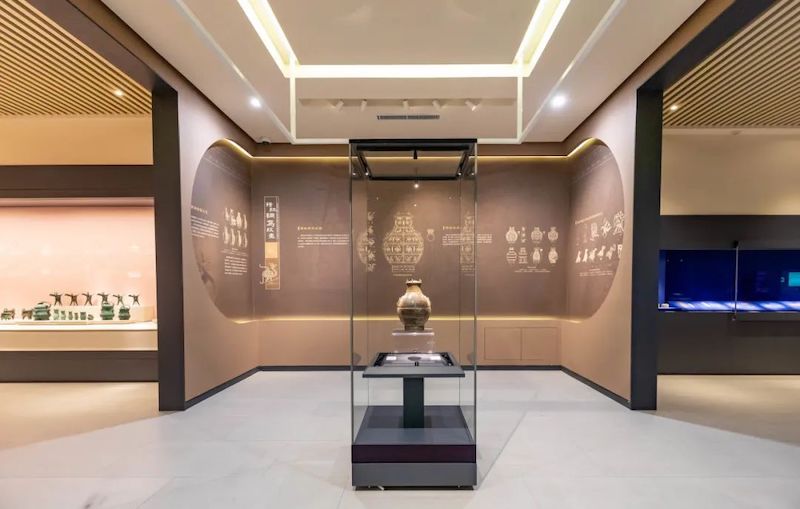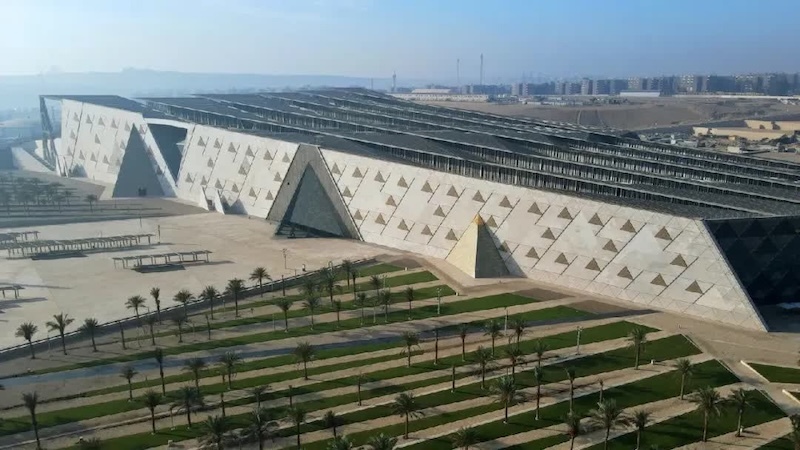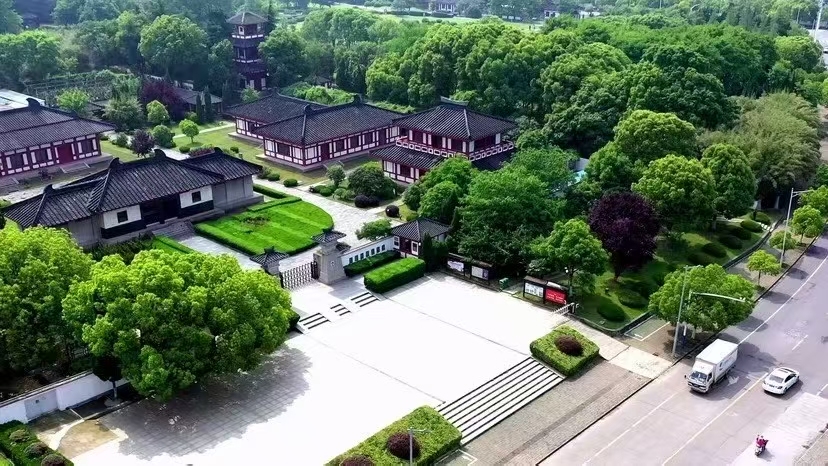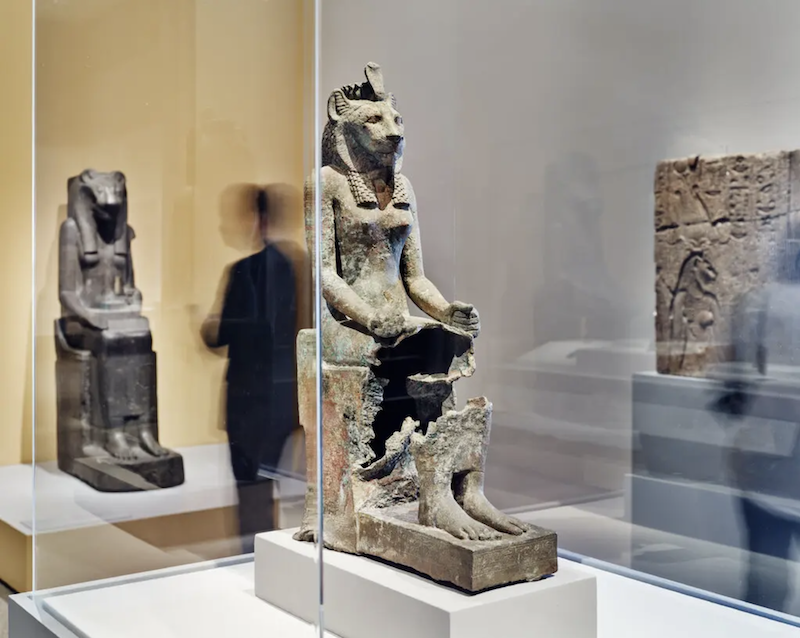
China is a land of ritual and music. "Ritual" is invisible but substantial; "music" is speechless but audible. The history of Chinese civilization is also the history of the development, evolution and inheritance of ritual and music culture. Rituals and music are not only the important cornerstones of ancient Chinese society, but also the concentrated embodiment of the spirit and wisdom of the Chinese nation.
Recently, the Shanxi Archaeological Museum launched the first phase of its basic exhibition - the "Ritual and Music of China" exhibition. Through thousands of years of cultural relics, it leads the audience to trace back the long river of time, find the source of ritual and music, understand the way of ritual and music, and appreciate the beauty of ritual and music.
Rites and music are not only important cornerstones of ancient Chinese society, but also a concentrated embodiment of the spirit and wisdom of the Chinese nation. Time flies, and the cultural genes that have been passed down from generation to generation have been deeply rooted in the soul, blood and memory of the Chinese people. They have become the ideological basis for the Chinese nation to build consensus and unite and strive, and are also the most solid historical foundation and spiritual support for cultural confidence in the new era.

"Rites and Music of China" exhibition site

"Rites and Music of China" exhibition site

"Rites and Music of China" exhibition site
It is reported that the exhibition "Ritual and Music of China" held by the Shanxi Archaeological Museum on the occasion of the New Year will systematically display the important role of Shanxi region in the development of Chinese civilization, and verify the formation, development and inheritance of ritual and music culture through archaeological unearthed cultural relics.

Jade Cong, Liangzhu culture period (about 5300-4000 years ago), unearthed from the Beizhao Jinhou Tomb in Quwo, Shanxi

Painted pottery basin, middle period of Yangshao culture (about 5800-5300 years ago), collected from Yukou Township, Fangshan, Shanxi
The order of heaven and earth, the harmony of heaven and earth
In the long-term production and life practice, the Chinese ancestors understood nature, explored its laws, respected the heaven and followed their ancestors, and used utensils to carry out rituals, which gave birth to the ancient ritual and music culture and formed a harmonious social order. "The Book of Rites: The Book of Music" states: "Great music is in harmony with heaven and earth, and great rituals are in harmony with heaven and earth." Rituals and music have already begun to participate in the construction of the bloodline of Chinese civilization in prehistoric times, laying the foundation for the early state system.

Jade god mask, from the Xiaojiawuji culture period (about 4200-3900 years ago), unearthed from the Jinhou Tomb in Yangshe, Quwo, Shanxi

Jade tooth bi, Longshan culture period (about 4300-3800 years ago), unearthed from Qingliang Temple Cemetery in Ruicheng County, Shanxi Province

Pottery jar, Longshan culture period (about 4300-3800 years ago), unearthed from Bicun site in Xing County, Shanxi
The world's model of humanities
During the Shang and Zhou dynasties, the ritual and music system gradually took shape and became more perfect. The ritual and music culture of the Shang Dynasty mainly demonstrated the sacredness of the kingship. In the Zhou Dynasty, a national governance system with feudal system and patriarchal system as the core was established. The establishment of rituals and music established a hierarchical and distinguished system of rules and regulations, and maintained social stability and harmony through ritual and music education, endowed rituals and music with rich humanistic connotations, and determined the status and influence of ritual and music culture in Chinese civilization.

Handle-shaped vessel, Western Zhou Dynasty (11th century BC-771 BC), unearthed from Hengshui Cemetery in Jiangxian County, Shanxi Province

Duo Gui, Western Zhou Dynasty (11th century BC-771 BC), unearthed from Beibai'e Cemetery in Yuanqu, Shanxi

Red copper pot with bird pattern, Eastern Zhou Dynasty (770-256 BC), unearthed from the Eastern Zhou tomb in front of Wanrong Temple, Shanxi
Promote morality and educate
After experiencing the turmoil and baptism of the Spring and Autumn Period and the Warring States Period, along with the formation of a unified multi-ethnic country in the Qin and Han Dynasties, the ritual and music culture has continuously absorbed and integrated various excellent cultural elements, forming an eclectic cultural characteristic. The ritual and music system broke the barrier of "rituals are not for the common people", and not only became the same code for governing the country and regulating order, but also integrated moral norms and values into people's daily lives. The ritual and music culture represented by Confucianism, while paying attention to external behavioral norms and etiquette, pays more attention to internal moral cultivation and spiritual pursuit, forming a cultural characteristic of both internal and external cultivation.

Painted ceremonial pottery figurines, Sui Dynasty (581-618 AD), unearthed from Huluche's tomb in Shagou, Taiyuan, Shanxi

Pottery tripod, Yuan Dynasty (1206-1368 AD), unearthed from Zhang Dingcheng's tomb in Linfen, Shanxi
Carrying forward culture and carrying forward tradition
The ritual and music culture has gone through vicissitudes, passed down from generation to generation, and has never ceased to thrive. The ideas and concepts of order, harmony, benevolence, courtesy, etc. contained in it have been integrated into all aspects of ancient society, reflecting the feelings of family and country, moral ethics, and have been integrated into the national blood and cultural genes for thousands of years, and have also had a profound impact on contemporary society. The combination of "benevolence" and "ritual" emphasized by Confucianism not only reflects respect and care for people, but also emphasizes the importance of social order and moral norms. This unique system of values makes Chinese culture unique in the world culture.

Male figurine, Northern Song Dynasty (960-1127 AD), unearthed from Wei Gao's tomb in Yuncheng, Shanxi

Colored glazed ceremonial figurines, Ming Dynasty (1368-1644 AD), unearthed from the tomb of Zhu Tianyu, a general of the Ming Dynasty, in Shijiazhuang, Changzhi, Shanxi
(This article is compiled from the information of Shanxi Archaeological Museum)


